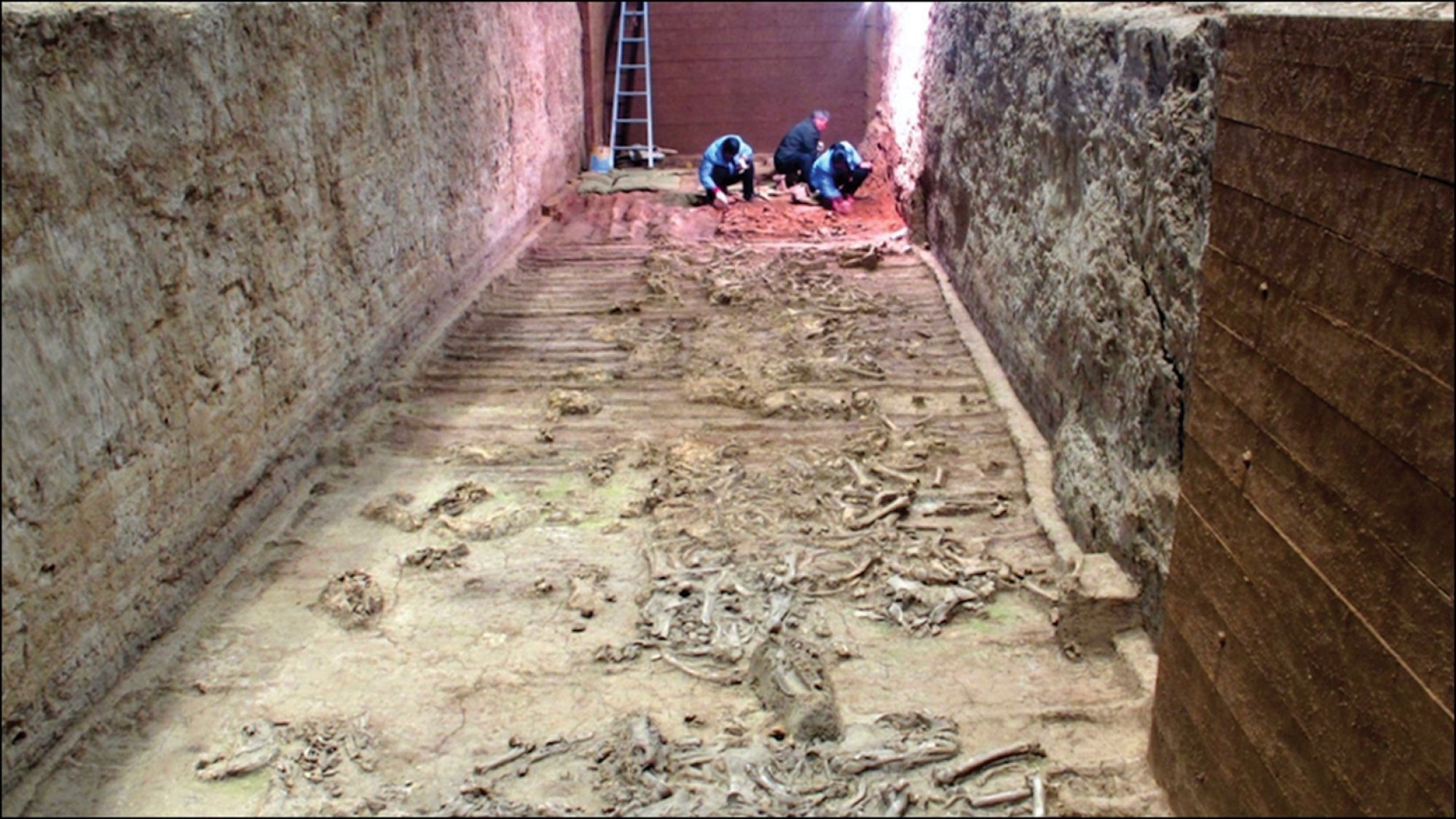
Horses buried alongside the Terracotta Army demonstrate the animals’ crucial role in ancient Chinese history
- Researchers analysed 24 horses that were buried in a supplementary tomb believed to represent administrative offices
- They found evidence that the mausoleum’s builders ensured the horses were of a specific age and height
Few animals have had as significant an impact on the course of human history as the horse, playing a central role in transforming militaries, economies, transport networks and even recreation.
But not all of the horses in the tomb are fake, and there are ancillary burial grounds that contain real horse bones. While their role and importance to Qin society have been studied, researchers had not analysed the horses themselves, until a recent study published in Cambridge University Press over the summer did just that.

The study found that all of the horses were males, and large, with a mean height of 1.4 metres. They were around 10 years old when they died, which would be their prime.
“The crucial role of horses in the Qin period is further demonstrated by the inclusion of horses in the mortuary contexts of the Qin elite,” the authors wrote.
“These findings provide insights into the selection criteria for animals to be included in the emperor’s tomb, and invite consideration of questions concerning horse breeds, husbandry practices, and the military and symbolic importance of horses in early imperial China”.
The researchers analysed the horses’ canines and pelvis bones and found the fossils clearly indicated that the horses were males.
The uniform gender of the horses was thought to be because of two possible reasons – that female horses were too important for breeding to kill for a funeral, or that ancient people largely rode male horses, so they would want the animals to follow them in the afterlife.
“This fits into the wider ancient Chinese pattern of [including] predominantly male horses in horse pits associated with elite burials during the late second and first millennia BC,” the scientists wrote.
The researchers could not determine if the horses were castrated during their lives, meaning they could not figure out if they were stallions or geldings.
The team also hypothesised that the age of 10 years old was “critically important” to the emperor because horses found in tombs of lesser elite officials had a relatively wider age range, albeit only by a couple of years in either direction.
Similarly, the height of the horses had equal importance, as the mean height of the emperor’s horses was above 1.4 metres, while other elite tombs contained horses with a mean height between 1.3 and 1.4 metres.
The researchers suggested that the height of the horses indicated the importance of mounted riding in the afterlife because height would not impact chariot warfare, but it would help someone on horseback see over crowds and stand out.
Interestingly, the real horse skeletons were taller than the terracotta horse statues, which had an average height of 1.385 metres.

The horses also showed signs that their legs were bound after they were killed during the burial process, and the horses were arranged with logic and order.
The researchers analysed 24 horses in the pits, which lies in a part of the mausoleum called the “inner city” and is to the southwest of Emperor Qin’s resting place. The front chambers were guarded by 12 terracotta soldiers and a cart. The horses were excavated from the back chamber.
The researchers had to analyse the horses without further digging, as the site operators decided to keep the exhibit in situ (or “as is”) for both conservation and tourism, so the team could only analyse the visible bones.
The tomb is believed to have symbolised the central administrative offices of the Qin empire.

